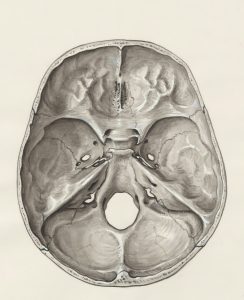Most people mistakenly believe that having Attention Deficit Hyperactivity Disorder (ADHD) means that you will be restless, energetic, and generally find it hard to focus. While these are some characteristics of Attention Deficit Hyperactivity Disorder in general, the truth is that there are three subtypes of ADHD, each with unique characteristics and challenges.
When a person has no understanding of these subtypes, they might believe their diagnosis was a mistake because they don’t experience the same things as another person with ADHD.
Understanding the different subtypes will help you understand yourself, your weaknesses, and which areas to focus on as you manage Attention Deficit Hyperactivity Disorder. Keep in mind that there is a great amount of complexity with ADHD, and one person’s experience cannot be more or less accurate than another’s experience.
ADHD-H (Hyperactive-Impulsive ADHD)
When someone mentions Attention Deficit Hyperactivity Disorder, this is usually the type that comes to mind for most people. Those with ADHD-H often get diagnosed in childhood, where they tend to be disruptive in school, struggling to sit still and pay attention.
Besides physical hyperactivity, people with Type 1 ADHD also experience “noisy” thoughts sometimes to the point of being overstimulated and overwhelmed by their busy minds. Adults with ADHD-H mostly experience the second type of hyperactivity, with disorganized thoughts and busy brains that struggle to calm down.
In childhood, ADHD-H is more prevalent among boys, but it is not uncommon in girls. Children with ADHD-H are talkative, creative, and tend to squirm and move around a lot when they are expected to be still and quiet. Many children make impulsive decisions, but those with ADHD-H frequently get into trouble because of their impulsivity and poor decision-making. The results of ADHD-H might significantly impact a child’s schooling experience.
 Adults with ADHD-H often feel restless and frustrated without knowing why. Even when they are diagnosed and receiving treatment for ADHD, they might feel persistently uneasy. This feeling often affects their sleep patterns, which in turn can affect their work performance and even begin affecting their relationships.
Adults with ADHD-H often feel restless and frustrated without knowing why. Even when they are diagnosed and receiving treatment for ADHD, they might feel persistently uneasy. This feeling often affects their sleep patterns, which in turn can affect their work performance and even begin affecting their relationships.
Adults with ADHD-H are often affected by their impulsive behavior and poor decision-making. All types of Attention Deficit Hyperactivity Disorder are treatable and manageable with a combination of lifestyle adjustments, medication to cope with symptoms, and emotional support in the form of counseling and therapy.
ADHD-I (Inattentive ADHD)
Many compelling and influential people claim to spend all their free time daydreaming and “switching off.” A number of these people have ADHD-I, whether they are aware of it or not.
These people can be successful because they work in teams where the people around them can correct mistakes and pick up the slack. Individuals with this Attention Deficit Hyperactivity Disorder type can be successful in their adult lives by positioning themselves alongside people who are strong in the areas they struggle with. The same is true for all Attention Deficit Hyperactivity Disorder types.
People with ADHD-I often appear to be “checked out” or lazy. It might seem that they are not listening when being spoken to. They often misplace things or forget to do tasks. For this reason, ADHD-I is the hardest ADHD type to diagnose, as it often seems like the person has a mood disorder or a personal problem of being aloof and forgetful.
ADHD-I is more prevalent among women, and frequently accompanies Sluggish Cognitive Tempo (SCT), a neurological disorder resulting in excessive brain fog and confusion.
As adults in the workplace, people with ADHD-I often face a unique type of pressure because of their inability to manage tasks and deadlines, as well as their inability to remember details. It’s especially frustrating for the people who long to be more productive and recognized for their strengths, rather than being criticized for their weaknesses.
The fact that many ADHD-I individuals have succeeded in their careers is proof that it is possible to be successful despite having this type of ADHD. Counseling and talk therapy have been shown to have dramatic positive effects on people with ADHD-I, often giving them the confidence and assurance to become successful.
ADHD-C (ADHD Combined Type)
Of the three subtypes, ADHD-C is by far the most prevalent. In children, ADHD-C is more common in boys than girls, but over time, that gap narrows. It is estimated to affect 70% of adults diagnosed with Attention Deficit Hyperactivity Disorder, both men and women.
As the name implies, individuals with this type of Attention Deficit Hyperactivity Disorder struggle with hyperactivity and inattentiveness. They have symptoms like fidgeting, impulsiveness, impatience, and interrupting others, along with inattentive symptoms like struggling with time management, organization, focus, and forgetfulness.
People with ADHD-C are more likely to experience emotional dysregulation, too, since they frequently swing between having bursts of uncontainable energy and confusing brain fog.
Dealing with any type of ADHD can be a disorienting experience, as you often feel out of control of your body and thoughts. However, ADHD-C is particularly difficult to deal with because you can’t harness the excess energy to use when it dissipates.
You might constantly feel like you are caught between two extreme moods, neither of which is conducive to work, relationships, or simply enjoying life. You might find yourself craving some kind of stability and even predictability in your life, and no one can blame you for that.
Thriving or surviving?
It’s always better to know your diagnosis, even though there are times you might wish you didn’t know about Attention Deficit Hyperactivity Disorder. Whether you are the parent of a child with ADHD or an adult coming to terms with a recent diagnosis, be assured that you are not alone.
 In fact, life might be more manageable now that you have a clearer understanding of what you are facing. You now have a much clearer idea of why you are struggling in certain areas and what to do about it.
In fact, life might be more manageable now that you have a clearer understanding of what you are facing. You now have a much clearer idea of why you are struggling in certain areas and what to do about it.
Learning about your subtype will give you specific areas to focus on. You might have a lot of work in front of you, with lifestyle changes to make and things to practice. Over time, some things get easier to deal with, and conquering your private mountain range can be immensely satisfying.
If, on the other hand, you are racked by fears, frustrations, and doubts, that is a perfectly valid response to a diagnosis of Attention Deficit Hyperactivity Disorder. You do not have to journey forward alone. You have an opportunity to develop a unique coping strategy and practice it until you move beyond surviving with ADHD to thriving despite it.
If you are a parent of a child with ADHD or a loved one of an adult with ADHD, education is the most useful tool at your disposal. It’s always helpful to learn new or specific things about mental health issues, but the best teacher is your child or loved one. Observe them and see how they navigate life, and when it is appropriate, ask them about their experiences.
Neurodiverse people tend to spend a lot of time feeling anxious about being different from everyone else. You can help them feel seen and understood by being patient, gentle, and selfless with them, even when they frustrate you.
If you would like to meet with a counselor as part of your coping strategy, contact our offices today. We can connect you with a therapist who will provide you with a safe space to be yourself and to unpack whatever you would like to share. Meeting with a counselor might be the first place you have been allowed to be yourself in a long time.
Photos:
“Selfie”, Courtesy of Hiki App, Unsplash.com, CC0 License; “Brain Cross section”, Courtesy of Europeana, Unsplash.com, CC0 License;
-
Miranda Otsuka: Author
I strive to create a safe, healthy space for my clients to navigate through life’s challenges in the presence of the Lord as much as they feel comfortable doing so. As a counselor, my goal is to serve you well as I am representing the Lord and allowi...
-
Kate Motaung: Curator
Kate Motaung is the Senior Writer, Editor, and Content Manager for a multi-state company. She is the author of several books including Letters to Grief, 101 Prayers for Comfort in Difficult Times, and A Place to Land: A Story of Longing and Belonging...
DISCLAIMER: THIS ARTICLE DOES NOT PROVIDE MEDICAL ADVICE
Articles are intended for informational purposes only and do not constitute medical advice; the content is not intended to be a substitute for professional medical advice, diagnosis, or treatment. All opinions expressed by authors and quoted sources are their own and do not necessarily reflect the opinions of the editors, publishers or editorial boards of Stone Oak Christian Counseling. This website does not recommend or endorse any specific tests, physicians, products, procedures, opinions, or other information that may be mentioned on the Site. Reliance on any information provided by this website is solely at your own risk.







